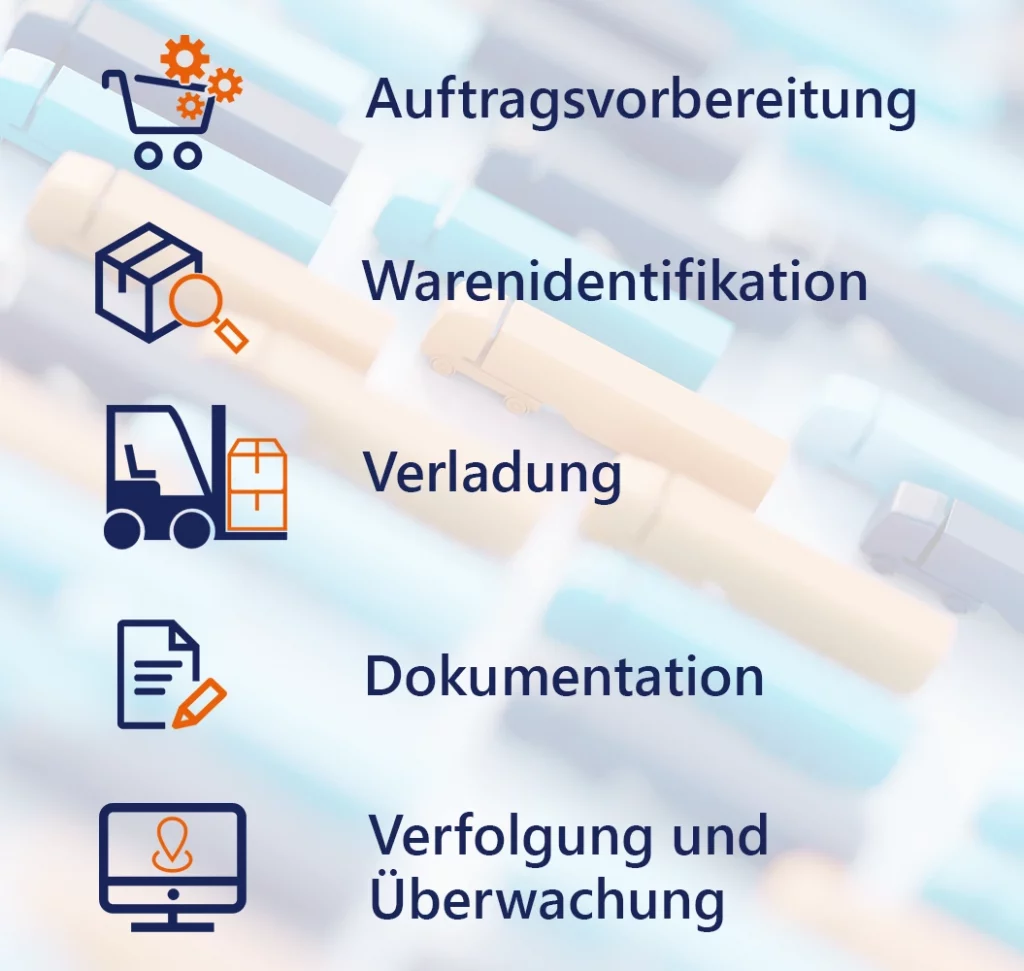Definition: What is a goods issue?
Goods issue is the process within a company in which products or goods are removed from a warehouse and prepared for dispatch or transfer to customers or suppliers. This process is an important component of a company’s overall logistics process and is the counterpart to goods receipt. The outgoing goods inspection is part of the outgoing goods process. It checks that all goods are complete, properly packaged and free of defects.
The main tasks in the outgoing goods process include the removal of goods from the warehouse, identity and quality checks, the creation of accompanying documents and consignment notes, order picking, packaging and preparation for dispatch or handover to the buyer.
Legal requirements must also be taken into account in outgoing goods. These may include environmental protection regulations, weight and height restrictions and packaging standards. When shipping abroad, additional regulations apply, including further requirements for customs.
Goods issue process
Goods issue in logistics comprises the following steps:

- Order preparation: Before the goods are loaded from the yard, the order is prepared. This includes checking the shipping order, selecting the appropriate goods and compiling the necessary documents.
- Goods identification: The use of barcodes, RFID tags or other labeling systems ensures clear identification of the goods to be delivered. This simplifies the tracking and monitoring of goods throughout the entire delivery process.
- Loading: The products are loaded onto means of transportation such as containers, railroad wagons or ships. Safe and efficient loading requires special equipment such as forklift trucks or crane systems.
- Documentation: All relevant documents such as consignment notes, delivery bills and customs papers must be properly prepared and processed when goods are dispatched.
- Tracking and monitoring: To ensure that the goods reach the correct destination and arrive on time, shipments are continuously tracked and monitored.
Documents required for outgoing goods
- Invoice: The invoice will be sent either together with the goods or separately by post.
- Address labels: The labels are used to attach to the parcel and mark the address information.
- Loading list: A loading list is required for processing via a forwarding agent.
- Consignment note: If the delivery is made by rail, ship or plane, a consignment note is important.
Interfaces to other processes
The goods issue process is usually the final link in the warehouse management chain and thus forms the interface to the subsequent operations in the yard area. A smooth transition between these sections is essential and is significantly supported by seamless communication between the corresponding management systems. The FlexYard Management System is characterized by its full integration with SAP, which creates an optimized basis for such process flows. This extended functionality enables you to record the movement of goods systematically and across all sectors – from stock removal to processes such as deconsolidation and repackaging through to loading and the final departure of the transport vehicle. FlexYard therefore offers you comprehensive control, management and analysis of all relevant activities.
In conclusion
Smooth processing of your outgoing goods is of crucial importance in your company’s logistics. Efficient organization of processes is important to ensure that goods leave the warehouse on time and in full. This outgoing goods process includes steps such as removing goods from the warehouse, quality checks, compiling orders, packaging and preparing for transportation, as well as creating the necessary documents. The main objective is to reduce lead times to a minimum and ensure that loading and dispatch takes place on time in line with truck departure times.
Our software solution is tailored to the specific challenges of your company. The approach enables the relevant processes to be automated and a digitalization strategy to be implemented. In this way, you can increase the speed of your internal processes and improve security at the same time.

